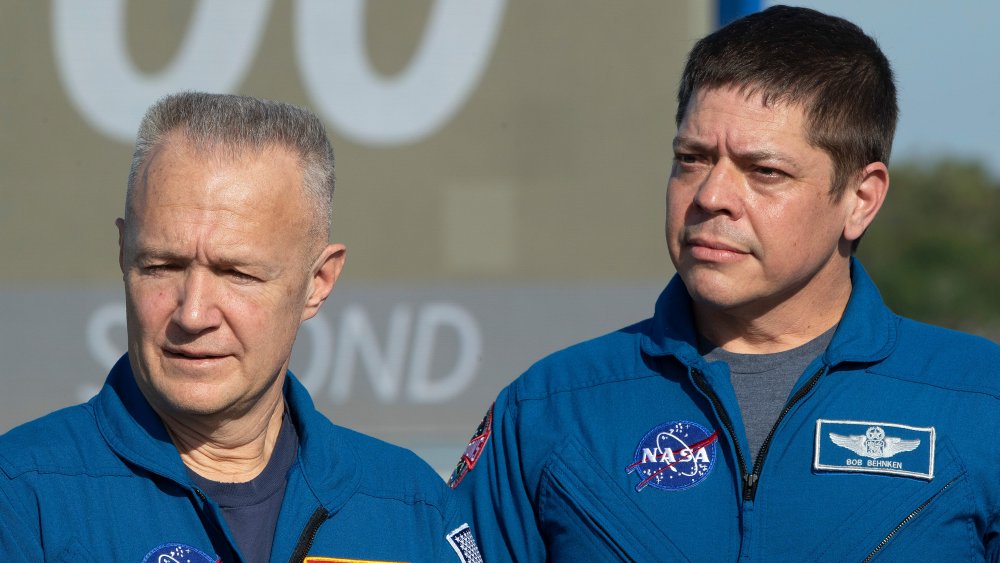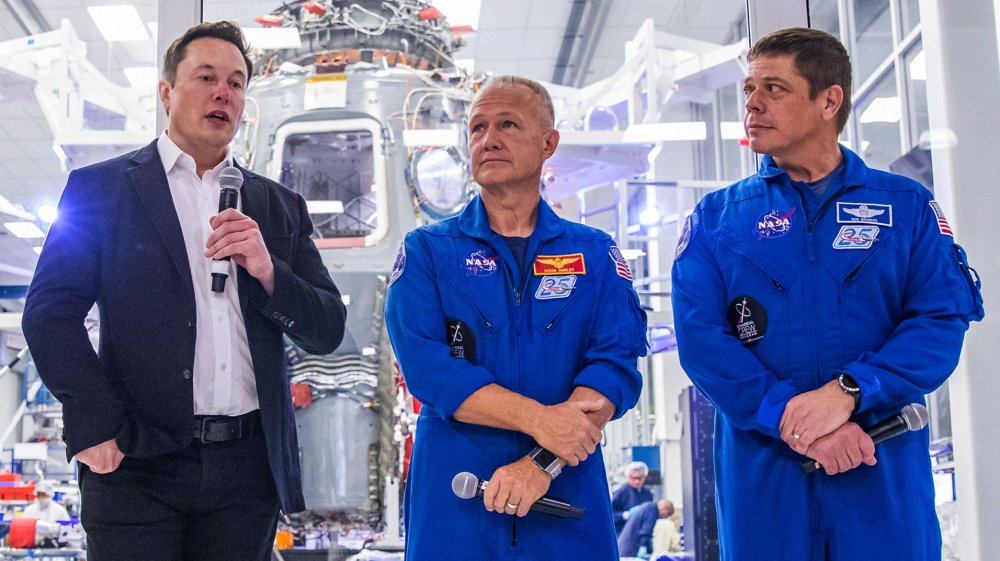The Truth About The NASA Astronauts Flying On The Historic SpaceX Mission
Barring any setbacks or other extenuating circumstances, on May 27, 2020, two astronauts will boldly go where others have gone before ... but they'll do it inside a Dragon, so that's new. Specifically, they'll do it in the SpaceX Crew Dragon Demo-2, which sounds like a job for Jon Snow and Daenerys Targaryen, but in this case, the task is being tackled NASA astronauts: Doug Hurley (left) and Bob Behnken (right) are slated to become the first crew to travel to the International Space Station via private spacecraft, according to Space.com, marking SpaceX's first astronaut mission.
Hurley and Behnken's space vacation can't last more than 119 days, because their dragon craft's solar arrays will likely conk out after 120 days. However, the trip could end in as little as a month depending on the condition of the ship. Even on the shorter end, that's plenty of time to start getting to know the ins and outs of a person, though maybe/hopefully not as well as dragon aunt and her snowy nephew know them. In the meantime, here's some more info about the space-bound Dragon riders.
The rockin' rocket men of SpaceX
Before being enlisted for Elon Musk's space experiment, retired Colonel Douglas Hurley spent 24 years in the U.S. Marine Corps, according to NASA. He gained 5,500 hours of flying experience in more than 25 aircraft, before graduating to spacecraft. Hurley commenced his NASA training in 2000 and after two years assumed various duties, which included being Batman. Well, technically he was dubbed a "Cape Crusader," an obvious allusion to his involvement with operations at the Kennedy Space Center, which is located in Cape Canaveral Florida, per the Encyclopedia Britannica. Hurley also piloted two space flights in 2009 and 2011, delivering equipment and supplies to other astronauts.
Colonel Bob Behnken isn't technically a rocket scientist, but he's a scientist who works with rockets, so close enough. He holds both a Masters and a PhD in mechanical engineering, writes NASA. Also a member of the U.S. Air Force, he previously used his learned brain to help develop weapon systems. Like Hurley, he started to get involved with NASA in 2000, and participated in two space missions, but his stints in space took place in 2008 and 2010. It appears, now, that their schedules and — perhaps the stars — are aligned.

